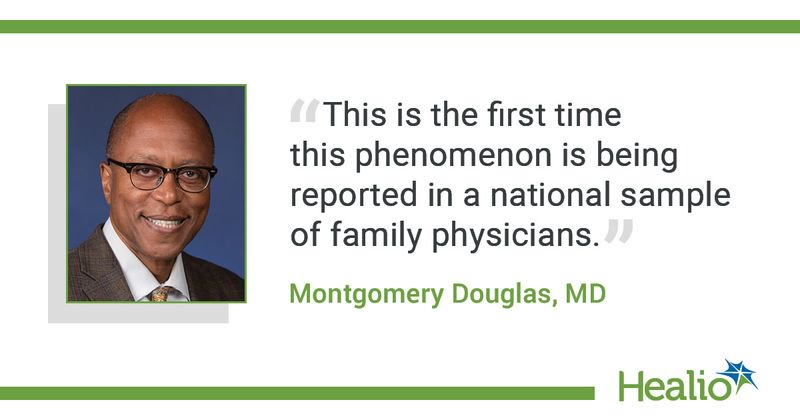Physicians from underrepresented populations report fewer burnout dimensions
Before the pandemic, family physicians from underrepresented racial and ethnic groups reported lower frequencies of two of the three burnout dimensions listed in the Maslach Burnout Inventory Manual, researchers reported.
“This is the first time this phenomenon is being reported in a national sample of family physicians, and it confirms a potential protective mechanism,” study co-author Montgomery Douglas, MD, chair of the department of family Medicine at UConn Health, told Healio Primary Care.

The researchers conducted a cross-sectional observational study using survey data from those who applied for American Board of Family Medicine recertification and family physicians who completed the National Graduate Survey. Of the 3,096 physician responses that were analyzed, 15% were from underrepresented populations, which the researchers categorized as participants who self-reported as Black or African American, American Indian or Alaskan, Native Hawaiian or Pacific Islander, and Hispanic or Latino. The physicians from underrepresented populations were significantly more likely to be women, speak Spanish and have an MD rather than a DO degree.
The findings, reported in Annals of Family Medicine, showed that underrepresented family physicians were less likely than non-underrepresented ones to report emotional exhaustion (adjusted OR [aOR] = 0.82; 95% CI, 0.69-0.99) and depersonalization (aOR = 0.54; 95% CI, 0.41-0.71).
Douglas said the data are “especially notable” since family medicine has the second largest group of professionals among all specialties who are underrepresented in medicine, as well as one of the highest rates of burnout.
The fact that family physicians from underrepresented populations tend to practice in more demographically diverse counties may account for these findings, according to Douglas. He also said it is possible that those from underrepresented populations “who succeed in becoming physicians may have more of a social justice mission, which is known to be an anti-burnout attribute.”
Overall, Douglas said the results underscore the “value” that physicians from underrepresented groups bring to the workforce and offer “an additional reason to advocate for and devote resources to diversifying the physician workforce.”
“[This is] a phenomenon that should be studied; for, if confirmed, these attributes and professional skills should be developed further in medical schools independent of physicians’ race or ethnicity,” Douglas said.

